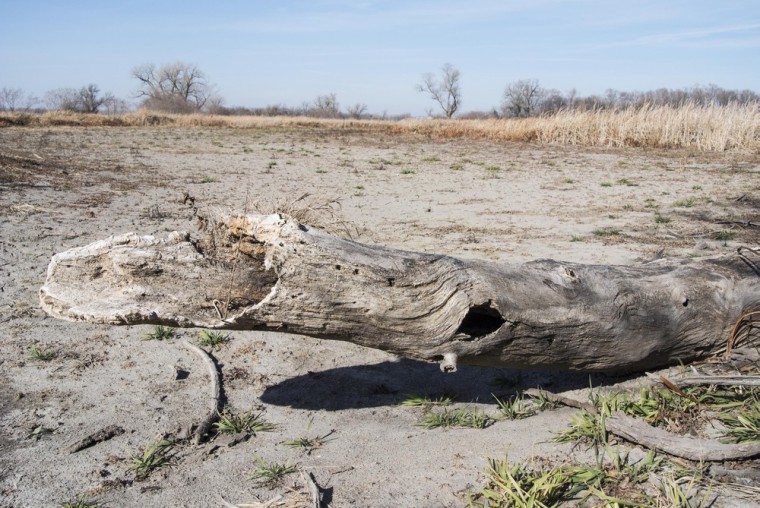While conditions started to improve earlier in November, they turned harsh to close out the month as above-normal temperatures and below-normal precipitation proved a dire combination in many regions, according to the Drought Monitor, a weekly compilation of data gathered by federal and academic scientists issued Thursday.
Forecasts for the next several days show little to no relief and weather watchers are predicting a drier than average winter for much of the central United States.
"The drought's impacts are far reaching," said Eric Luebehusen, a meteorologist with the U.S. Department of Agriculture, in the report.
Nebraska is by far the most parched state in the nation. One hundred percent of the state is considered in severe or worse drought, with 77.46 percent of the state considered in "exceptional" drought - the worst level, according to the Drought Monitor.
Overall, roughly 62.65 percent of the contiguous United States was in at least "moderate" drought as of November 27, up from 60.09 percent a week earlier,
The portion of the contiguous United States under "extreme" or "exceptional" drought - the two most dire classifications - expanded to 20.12 percent from 19.04 percent.
The U.S. Department of Agriculture said this week that U.S. farm income will drop by 3 percent this year due in part to the ravages of the worst drought in half a century. So far, crop insurers have paid $6.3 billion on losses this year, USDA said. Some analysts say the still-persisting drought in the Farm Belt will drive indemnities to $20 billion.
On top of the crop losses in 2012, more losses are likely for 2013 if soil moisture does not improve. The U.S. Department of Agriculture said this week that the condition of the winter wheat crop fell to an all-time low for late November with only 33 percent of the new crop rated good to excellent, and 26 percent was rated poor to very poor as the plants headed into winter dormancy.
In South Dakota, 64 percent of the crop was rated poor to very poor; and at least 40 percent of the wheat crop in Texas, Nebraska and Oklahoma was also rated poor to very poor. Top producer Kansas had 25 percent of its crop rated poor to very poor.
Though light showers are possible through the Mississippi Valley and possibly into southern Texas in the next few days, dry, warm conditions are expected across the remainder of the contiguous United States, the Drought Monitor said.
The National Oceanic and Atmospheric Administration has forecast warmer-than-average temperatures in much of Texas, northward through the Central and Northern Plains and westward across the Southwest. A drier-than-average winter is forecast for Kansas, Nebraska, the Dakotas and through the upper Midwest.
